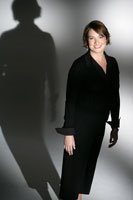A new light wave
1). Save money and energy. Generally, a LED consumes less than 0.1 watts to operate. This low power consumption means you save on your energy costs.  Lately I've been hearing a lot about LED lights. It seems this is the next new thing in lighting. We are already seeing it being used in televisions and other applications. Now LED is making its way into standard lighting applications.
Lately I've been hearing a lot about LED lights. It seems this is the next new thing in lighting. We are already seeing it being used in televisions and other applications. Now LED is making its way into standard lighting applications.
It is perfect for things such as holiday lights because they don't get hot like other bulbs. Right now, LED is primarily used in architectural fixtures like rope lighting, track lighting and step lights, but bulbs that fit a standard socket are available. (The standard socket bulbs are very expensive, but that will change in the next few years, just as the compact flurescent bulbs have gotten cheaper s they grew in popularity.) More and more decorative lighting companies are designing accent lighting using LED technology.
What is LED?
LEDs (light emitting diodes) are solid-state semiconductor devices that can convert electrical energy directly into light.
Features and Benefits of LEDs
2). No heat output. LEDs can convert almost all the energy used into light creating a highly efficient light source. In
contrast, today's incandescent bulbs emit a lot of energy in the infrared spectrum which can't be seen. We know this wasted energy as the heat today's bulbs give off.
3). Long lifetime. A LED can last up to 100,000 hours. High Power LEDs can last up to 50,000 hours. In comparison an incandescent lifetime
is about 1,000 hours and a halogen is about 2,000 hours.
4). Environmentally safe. LEDs are made from non-toxic materials unlike flourescents which contain Mercury. Can also be recycled.
5). Durable. No loose or moving parts. Able to withstand cold, hot, and magnetic environments.
Using almost 90% less electricity than standard bulbs, lasting up to and beyond ten years, and producing an even spectrum of light that is unparalleled; the future of lighting is Light Emitting Diodes (LEDs). The Department of Energy has stated a goal to reduce electrical lighting energy consumption by 50% percent by the year 2025 through the use of LEDs. Market studies predict that by 2040 LEDs will have replaced all other sources of artificial light in the developed world. When LEDs are universally implemented there will never be a need for another power plant. By far LEDs are the most dramatic change and realistic way for each of us to conserve energy and save our natural resources.
When the light emitting diode was invented in the 1968, it was not even considered as potential competition for incandescent light. It was not nearly powerful or bright enough. However, over the last 35 years, Moore’s law has continued to be proven true. LED luminosity has doubled every 18 to 24 months since and is now finally ready to overtake the entire lighting market. LEDs can be used in any residential and commercial space. Equally as important, LEDs are made of plastic making them nearly indestructible.
Nearly everyone experiences the benefits of LED lighting several times a day, whether they realize it or not. Televisions, VCRs, billboards, Christmas lights, cell phones, car lights, stoplights and walk signals are all built with LEDs. At our current rate of progress, LEDs will be able to replace every light bulb in existence by 2010. Although LEDs may cost more up front, analysts estimate they pay for themselves within the first two years of their eleven-year lifespan. For some consumers the initial cost continues to be a barrier, in the near future this will be eliminated. Like the advancement of computers, LEDs are not only growing in power and capacity, but consistently dropping in price.







No comments:
Post a Comment